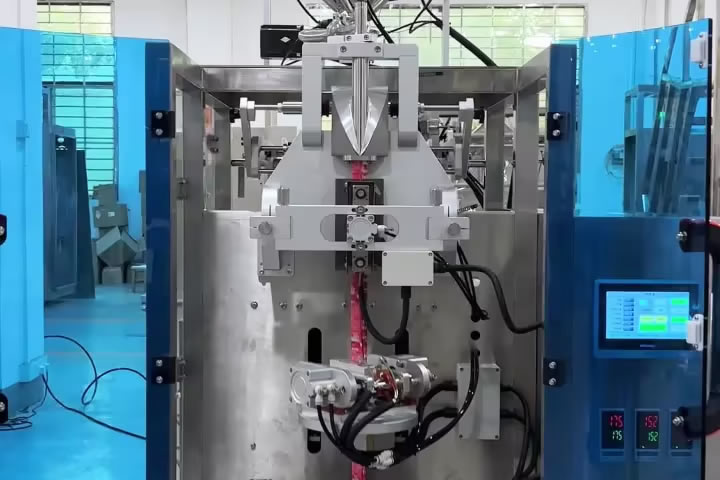"Mr. Wang, can your fluid packaging machine really handle sesame paste?" When I received a call from a Shandong customer in late autumn last year, the buzzing sound of filling in the workshop came from the receiver. As a sales manager, I know that this old factory, which has been working in the condiment industry for 30 years, is worried about the packaging of the new sesame sauce hot pot base - traditional equipment always clumps at the bottle mouth during filling, and the solidified sauce hangs on the assembly line, like stalactites.

The fluid packaging machine of our factory is specially designed for this kind of "stubborn" material. When I walked into the customer's workshop with my technical team, I happened to catch them filling peanut butter with old equipment. Operator Lao Zhou smiled bitterly and opened the hopper: "Look at this paste-like thing, if the flow rate is slightly unstable, it will not be poured accurately." Our newly installed fluid packaging machine showed its unique skills: the double-screw propellers are like two shovels rotating in opposite directions, pushing high-viscosity materials evenly to the injection port. On the day of commissioning, the workshop director stared at the error values of ten bottles in a row on the electronic scale, turned to the purchasing manager and said: "We should have changed this equipment long ago!"
The online cleaning system is an unexpected surprise for customers. In the past, it took four hours to stop production for production changeover and cleaning, but now the fluid packaging machine automatically performs the CIP cleaning procedure. When I visited them again last month, they were just switching from sesame paste to sesame oil production line. I watched the operator click "Oil Cleaning Mode" on the touch screen, and the green light came on the equipment 38 minutes later. "This system is smarter than our dishwasher!" Lao Zhou held up his mobile phone to take pictures of the cleaning process, "Even the corners of the material tube can be cleaned."
The improvement in changeover efficiency directly helped customers grab orders for the Spring Festival. Last December, they received a temporary request from a supermarket to customize small bottles, and they had to complete the switch from 200ml to 100ml specifications within three days. Our installation team adjusted the modular mold of the fluid packaging machine overnight, and the new bottle type had started trial production at dawn. "Your speed of changing models is faster than changing the menu in our cafeteria!" The logistics manager looked at the sample cars that came out in a line, and his heart was finally at ease.
The sealing pass rate is the hard indicator that customers care about most. On the day of acceptance, the quality inspector randomly opened 20 bottles of sesame sauce base, and turned the bottles upside down for ten minutes without leakage. The factory manager took a magnifying glass to look at the heat seal pattern on the bottle mouth: "The instant heating technology of this fluid packaging machine is amazing, and the temperature control is more than three times more accurate than our old equipment." The re-inspection report six months later showed that their customer complaint rate dropped by 70%, and the new product market share in North China ranked among the top three.
A few days ago, I received a sample gift box from a customer with a note inside: "This fluid packaging machine is now the mainstay of our production line. Even the consumables supplier said that our bottle mouths no longer have peroxidation caking." Looking at the slogan "Old Brand, New Technology" on the gift box, I suddenly remembered the 1998 equipment manual I found in the corner of the workshop during installation. There was a note in the yellowed paper: "When can the problem of sauce sticking to the wall be solved?" This problem that has plagued the industry for twenty years has finally found an answer in our generation of fluid packaging machines.

